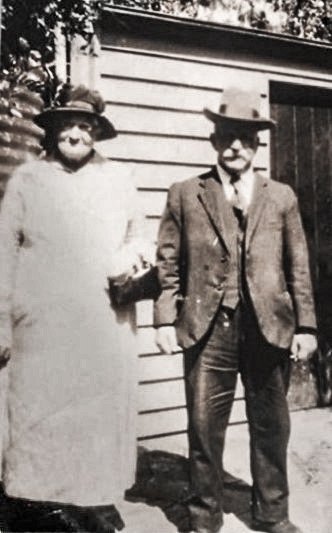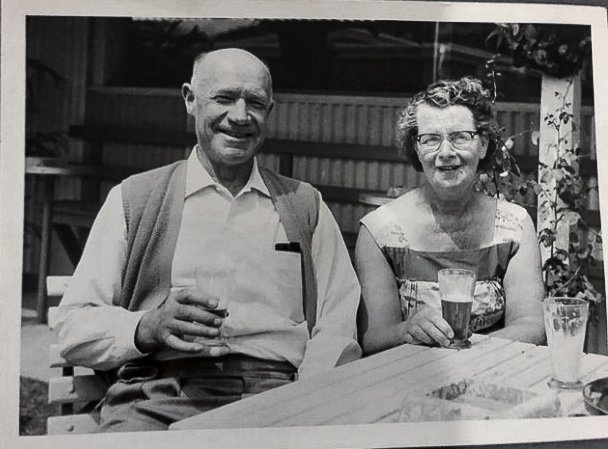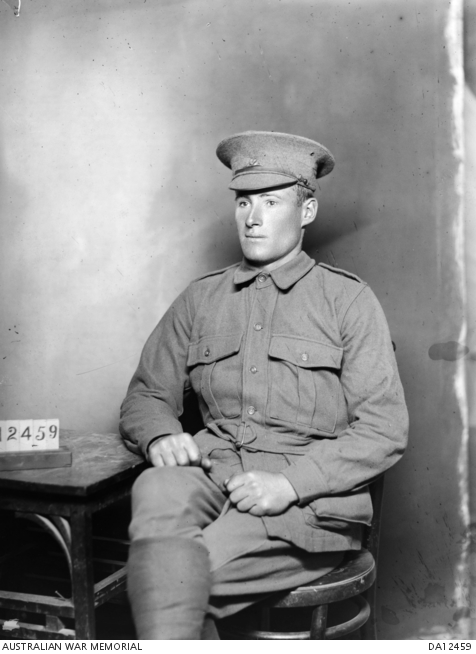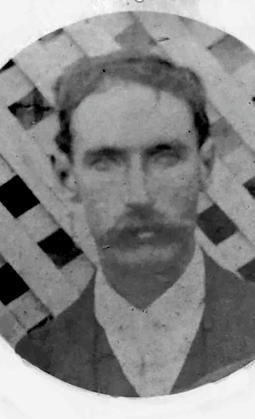
Alfred William ANSELL
Eyes blue-grey, Hair dark, Complexion fair
The ANSELL family of Swan Hill - three boys go to war, only one returns
The Fromelles Association is most grateful to Alf’s extended family for their support and input to this story.
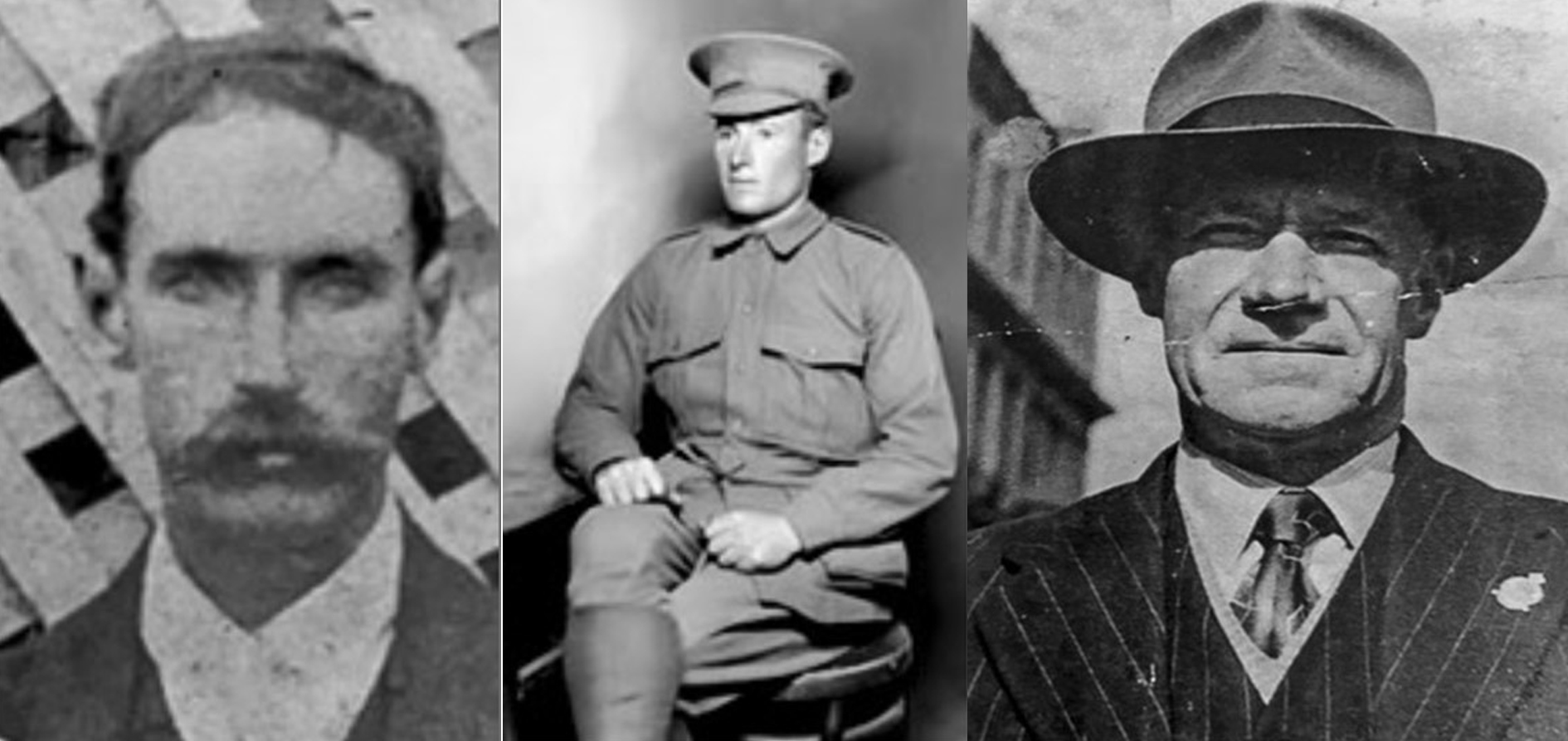
Three of the five Ansell sons – Alf, Frank and Charles - enlisted to serve during the first World War. Only Charles returned home to Australia.
Alf and Frank led the way signing up in February 1915 but they only remained in the recruiting camp for a few weeks. Both were discharged for refusing inoculations for small pox and enteric fever.
Next off the mark was Charles, the youngest of the three, who enlisted in March 1915 aged just 18 years. He embarked with the 24th Battalion for Egypt and Gallipoli in May 1915.
Alf (28) and Frank (22) successfully re-enlisted in July 1915 just a few days apart. Frank chose to re-enlist in his hometown of Swan Hill but it seems that Alf felt the need to enlist in Kerang, some 60 kilometres away from Swan Hill – and also to register under a false name (his mother’s maiden name). Perhaps he had been knocked back on other occasions, not just when he refused inoculation, and feared that he may be knocked back again. Alf chose to use his mother’s maiden name (and his third Christian name); he also claimed to have been born in Deniliquin, New South Wales rather than his actual Swan Hill place of birth. Other details seem to be accurate, however, it is noted that his enlistment papers initially show his mother as next of kin but identify her as his aunt.
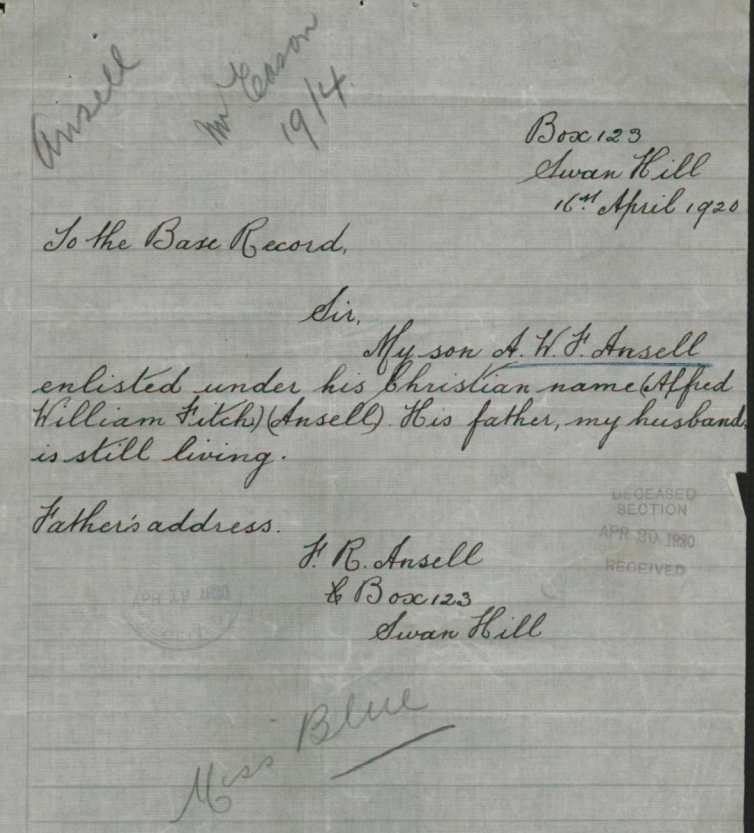
Alf was assigned to the 5th Pioneer Battalion while Frank was in the 2nd Australian Field Artillery Brigade. This story focuses on Alf as a part of the Fromelles story but we touch on the stories (as we know them) of Alf’s brothers to complete the family picture.
Frank and Emily Ansell, Alf’s parents
The daughter of English migrants, Emily Fitch, married Frank Ansell in 1885. Emily had a rough start beginning life on the Victorian goldfields and being made a ward of the state at the age of 3 (with her sister Jane, 7) when her mother died in 1867. In contrast, Frank was born in London and emigrated to Australia as a young man sometime in the 1870s or 1880s.
In 1886, the newly married Frank and Emily were both working at Tyrrell Downs station near Swan Hill – Emily was a cook. They later moved into Swan Hill where Frank had a butcher’s shop. They had eight children over the next 17 years, five boys and three girls, losing baby Alice in 1899; the rest survived to adulthood:
- Alfred (Alf) Fitch 1886-1916
- Frances Edith 1889-1935 (m William Wood 1914)
- John (Jack) Allan 1891 –1973 (m Agnes Bawden)
- Frank Atkinson 1893-1918
- Charles Richard 1897-1960 (m May Hotchin)
- Alice Henrietta 1899-1899 (died infancy)
- Percy Baden 1901-1978 (m Lucy Farrell)
- Alice Margaret 1903-1965 (m Albert Smith 1926)
Alf and the 5th Pioneer Battalion
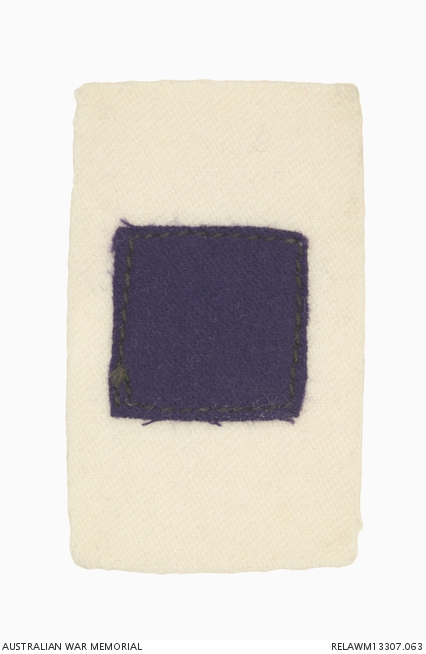
A private in the 9th reinforcements of the 5th Pioneer Battalion, Alf left Melbourne for Egypt on 10 September 1915. Alf’s records show little detail of his time in Egypt but we know that the Battalion undertook training around Mahsama and Ismailia, north east of Cairo and near the Suez canal. His record also shows that he was transferred briefly to the 57th Battalion in February but went back to the 5th Pioneers a month later. He also spent a fortnight in hospital in April 1916 but records do not show the reason for his stay.
The pioneer battalions were generally stationed very close to battle front lines and were trained as infantryman but were also tasked with light engineer functions. This included digging trenches, labouring, constructing strong points and light railways, and undertaking battlefield clearance. Accordingly, those assigned to the pioneers generally required construction and engineering experience in addition to basic soldiering skills.
On 19 June 1916, the 5th Pioneer Battalion was transported to Alexandria where they boarded the transport vessel Canada, bound for Marseille in France. They then travelled by train to Hazebrouck and encamped around Bae St Maur. As part of their introduction to the front line, they laid telephone cable and constructed railway lines. Their first major action came around Fromelles on 19 July 1916 where two companies were assigned to support the attack.
The Battalion’s commanding officer, Lieutenant Colonel Herbert G. Carter, DSO, gave some insight to the pioneers’ view of preparations and the eventual attack at Fromelles in a series of letters home.
Lt-Col Carter’s first comments about arriving in France (letter dated 2 July 1916) show the change for the troops leaving Egypt and arriving in France. He refers to the 60 hours in the train and arriving in their billets:
“in a lovely little village – it was quite a new experience for the men and the presence of women and children is having an excellent effect. I don’t think I’ve heard a swear word!”.
On 9 July, he advised that they had moved closer up the line and had been gassed as part of training, going on to say:
“The work we do is very interesting. We are actually in billets and only go up to the trenches………to carry out the various jobs so that the men are only 6 or 8 hours there per diem with reduced risk.”
And finally, in his letter dated 21 July 1916 he describes the Battle of Fromelles for the 5th pioneers in the following terms:
“..been in a stunt already. Lone Pine on about 6 times the scale – over in 24 hours. The weather has been good. We’ve had a good deal of trench digging. My piece de resistance so far was the construction of a mile of trench tramway – completed within 3 nights of the order being received – the last 500 yards over open country swept by machine guns. ………It had to be done entirely at night. I haven’t had a night’s rest for a week.”
While not specific to Alf, these extracts give us some idea of the likely experience of Fromelles for Alf as a part of the pioneers.
What do we know of Alf at Fromelles?
We do not know definitively Alf’s personal experience of Fromelles although we can piece together some of his story from his AIF file, unit war diaries and evidence provided to the Red Cross.
According to the Red Cross file, Alf was a member of C company. The unit war diary records that, on the evening of 19 July, C company were assigned to help repair a badly damaged tramway but they could not complete the task due to heavy fire. From the evening of the 20th and over the next day, the 5th pioneers had parties out all day cleaning up the battlefield, completing salvage work and burying the dead. Entries in the unit diary has a gap between 21st and 24th July but notes that the battalion had been busy repairing trenches and parapets in different sectors of the front line and commented that “infantry not able to deal with large amount of work to be done”. With the heavy workload spread across numerous areas, it is not surprising that there was no clarity about the fate of just one soldier, our Private Alf Fitch.
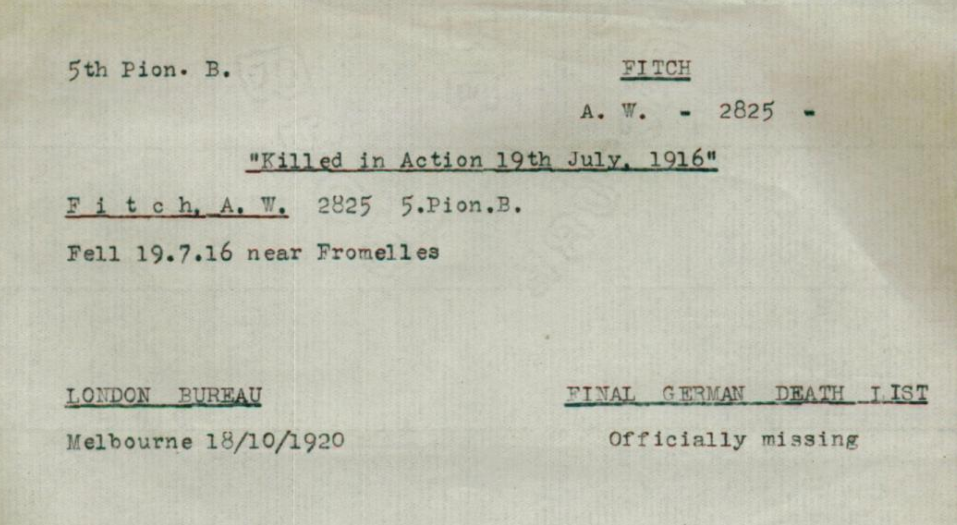
Alf was officially reported as missing on 23 July 1916 although it is believed that he was actually missing directly as a result of the Battle of Fromelles on 19-20 July. His name appears on the German death list dated 4 November 1916 and his identity disc was handed to the Red Cross in Geneva and then onto the Allies.
Alf’s death at Fromelles is supported by evidence provided by 5th Pioneer Battalion colleagues to the Red Cross. 2720 Lance Sergeant John LYNCH made the following statement on 10 October 1917:
“I knew Casualty well. Called "Fitch". He was in my Company 11th Platoon C Coy. On the 19th July, 1916 at Fleurbaix he went over the parapet with us in the 2nd wave alongside Pte Bradlin also 5th Pioneers, now with the unit in France. Casualty has not been seen since……...”
An earlier statement provided by Major Andrew J. Dwyer in November 1916 also indicated that Alf went over the parapet at Fromelles on the night of 19-20 July 1916 and was unaccounted for.
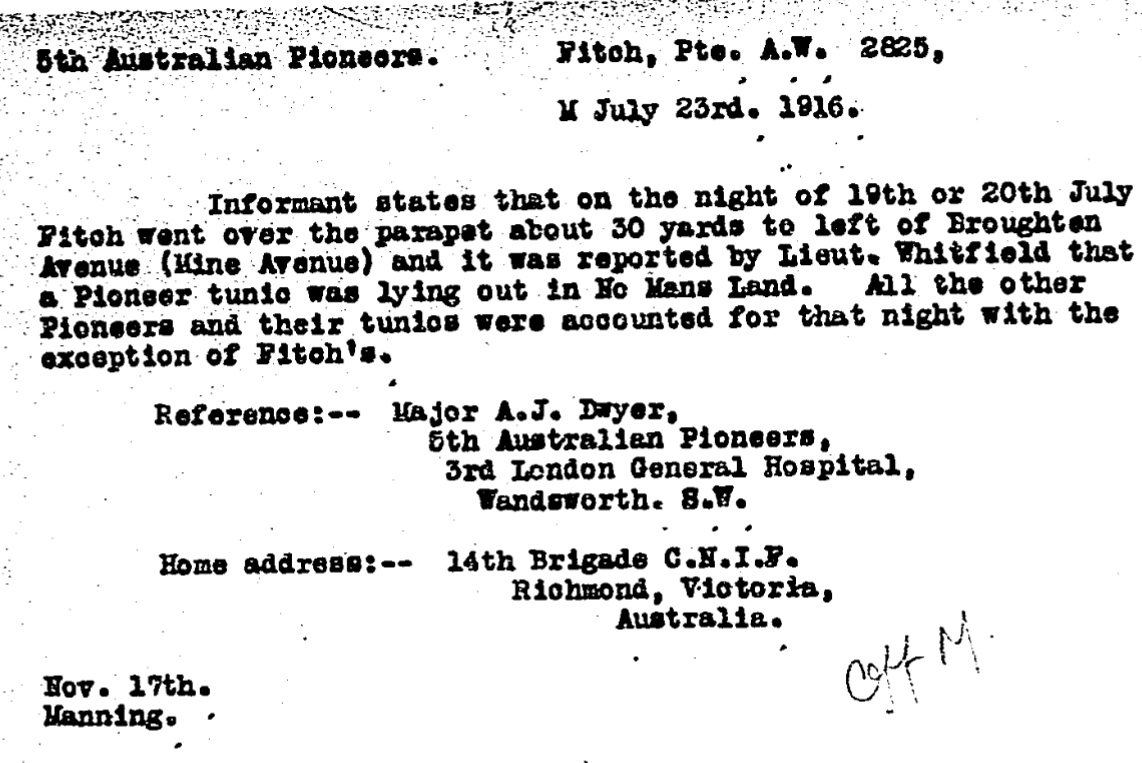
Eventually, in April 1917, an official court of enquiry found that Private Alf Fitch had been killed in action. The report nominated 23 July 1916 as his date of death but researchers believe it more likely that he was killed sometime on the night of 19-20 July 1916.
The Ansell family back at home
In late August 1916, Emily Ansell as next of kin received notification that her eldest son Alf was missing in action in France. Within days, she had further notification that her younger son, Charles, had been wounded in action and evacuated to England for treatment. Frank was also in action somewhere in France with the 2nd Field Artillery Brigade.
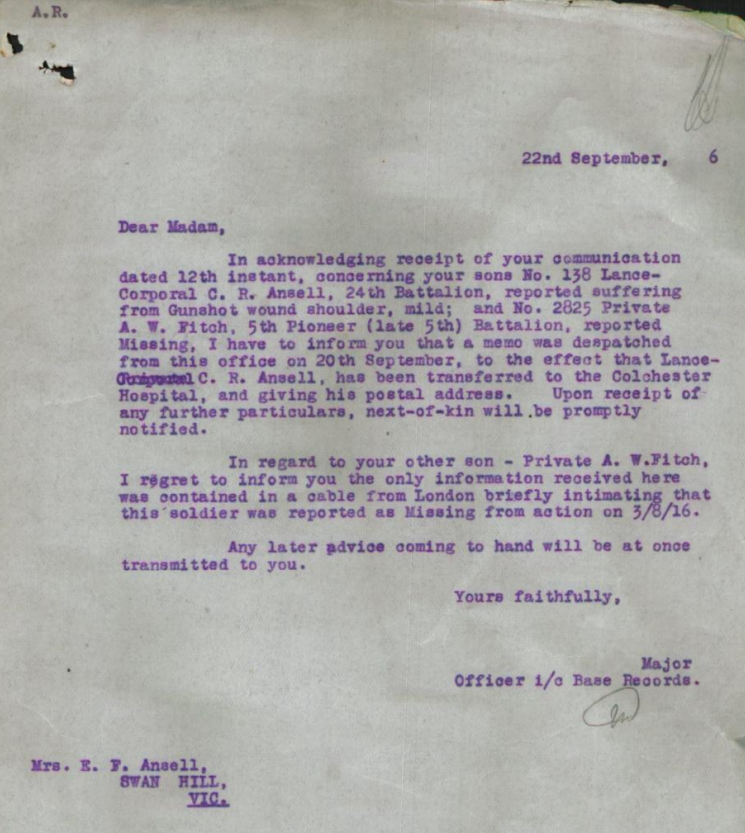
With spasmodic and very limited communication channels, the grief and worry for the family during these months must have been dreadful. In a postcard written to Charles in hospital in England in November 1916, Emily grieved for the loss of Alf, “I do wish he had never gone. God bless him wherever he is, my darling”.
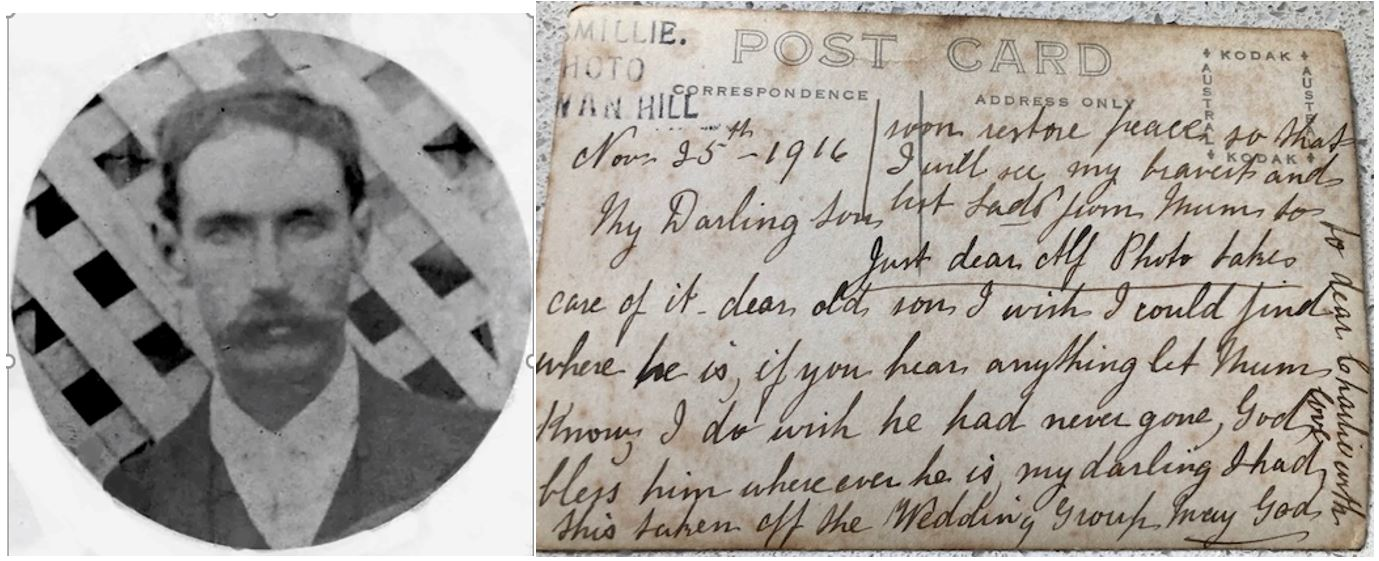
On 30 March 1917, official news came that Alf was dead. It was reported in the local paper that:
“News reached Swan Hill on Friday night that Private A. W. F. Ansell, son of Mr. Frank Ansell, of Swan Hill, had been killed in action on the 23rd July, 1916. He had been reported missing.”
Alf’s identity disc was sent from Germany via the Red Cross in June 1917 and eventually returned to the family, the only personal effects the family received. No grave for Alf was ever identified at the time, but his name is recorded on the Villers-Bretonneux memorial in France.
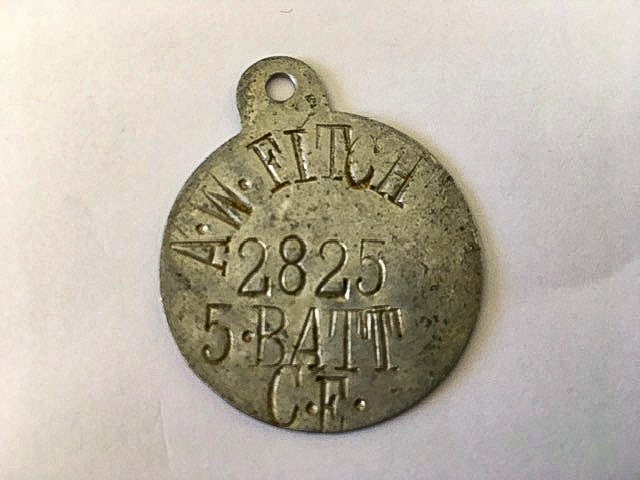
Alf is Identified at Pheasant Wood in 2024
After the battle, German soldiers removed 250 Australian casualties from the battlefield, burying them in a large pit near Pheasant Wood. This mass grave was not discovered until 2008. Identification by DNA matching has been ongoing since that discovery as relatives have been able to found. On 23 April 2024, the Honourable Minister for Veteran Affairs and Minister for Defence Personnel, Matt Keogh MP, announced that DNA testing has proven that Alf was identified as being one soldiers who was in the mass grave. This brings the total number of found soldiers to 180 of the soldiers in the grave have been identified.
Alf’s great niece, Joan Grall, was interviewed on radio shortly after the announcement was made. Below are some excerpts from that interview. It must have been terrible for my grandparents and great grandparents. Just as young children as we were, Alfred was talked about, but not at a lot. We only knew that he was missing. Naturally, we checked all military records, but we didn’t know.
My husband and I went to France in 2019 and did a battleground tour. The Australians are very highly thought of and there was so much love for the soldiers that helped them out in the first World War.
We saw Alf’s brother Charles in the Adelaide cemetery and with some investigation we thought maybe Alf could be discovered eventually.
From then on it just sort of snowballed. We got in touch with the Fromelles Association of Australia and gave DNA.
Then began the long wait.
Every couple of years more soldiers were announced as being identified, but not our fella. This kept going on and on. We probably gave up a bit of hope, we’re never going to find anything…
Then out of the blue we got a phone call from a non-identified number. Of course whenever you get one of those numbers you sort of think is it a scam, should I answer it answer or should I delete it, but I did answer it.
I quietly said hello and Maj David Wilson told us the whole story. I honestly couldn’t believe it. I really couldn’t believe it they had finally identified Alfred. It was a really surreal moment
We’re all so happy in disbelief it happened. Really very pleased with what’s been done. It is so great what they could do that wonderful technology
Members of family put together the words for Alf’s headstone.
Worthy of respect was he
From those he left behind
A much loved son
And brother true and kind
While the family were not able to attend the reinterment ceremony, they now know where Alf’s last resting place is and that he will be honoured in a way he deserves to be.
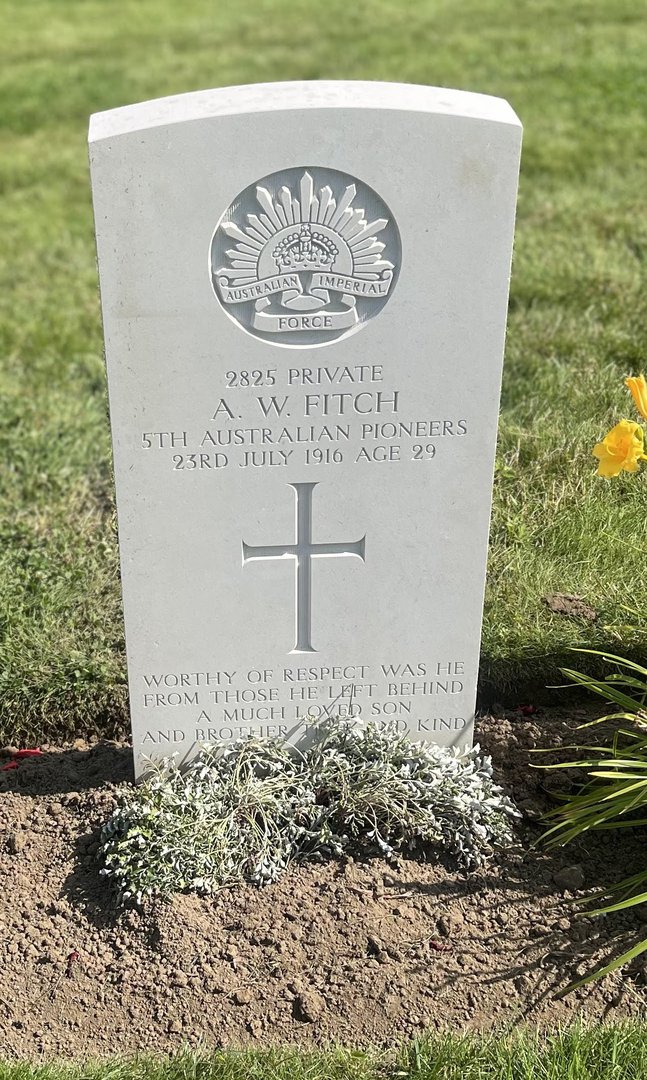
Pheasant Wood Ceremony
Bronwyn Stanley, Vice President of the Fromelles Association of Australia had the honour of unveiling Alfred's headstone at the Pheasant Wood Ceremony on the 19th July 2024. She recalls:
"As a researcher for the Fromelles Association since 2018, the 19th July 2024 ceremony in Fromelles was the first time I have been able to visit and attend the ceremony alongside Royce, Jim and Geoffrey. It is a testament to everyone's hard work and dedication that we can continue to find and pay tribute to the men of Fromelles.
I had the privilege of unveiling the headstone for Alfred. It was a moving and special moment to be able to take part and honour his legacy. I too come from a farming community and from a family that went to war, Alfred and I also share another connection, The Mighty Murray River. Alfred was born and raised in Swan Hill, about 2 hours down river from my hometown. I pictured the calmness, the sounds and the beauty of the Murray as I walked down to unveil his headstone.
I felt proud to represent the family and the Fromelles Association and was very thankful for the opportunity."
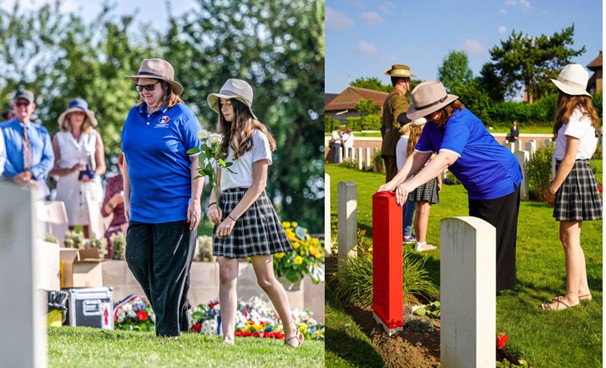
Pheasant Wood Military Cemetery
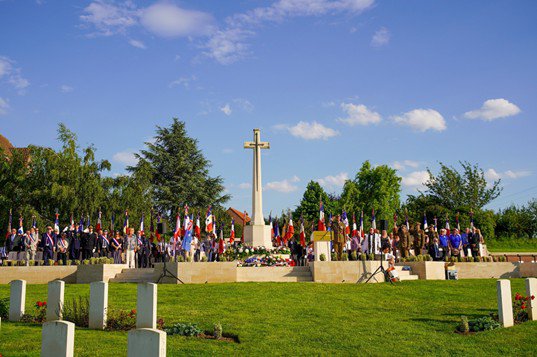
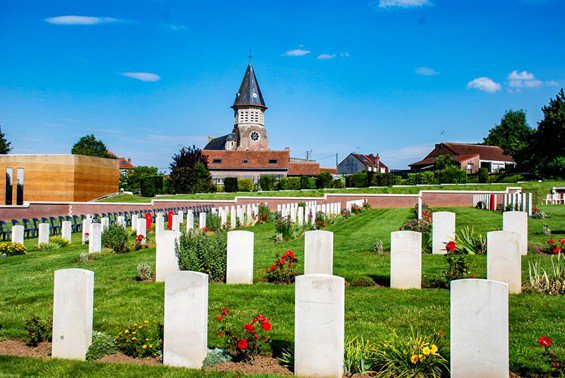
Pheasant Wood Military Cemetery
Alf’s brothers, Charles and Frank, at War
The three Ansell brothers served in three different battalions – Alf in 5th Pioneers, Charles in 24th and Frank in 2nd Field Artillery – and it is unclear whether they had any opportunities to catch up whilst on service overseas. The brothers had a brief overlapping period when all three were in Egypt; this was from January to March 1916 and it is hoped they were able to make some contact. Charles had left Egypt for France in March while Alf and Frank left separately for Marseille in June 1916.
Corporal Charles Richard Ansell, 138 [1896-1963]
Charles embarked from Australia in early May 1915 to Egypt where training shortfalls were made up during July and August. On 4 September 1915, the 24th Battalion went ashore at Gallipoli where, according to the AWM, it spent the next 16 weeks sharing duty in the Lone Pine trenches with the 23rd Battalion. The fighting at Lone Pine was so dangerous and exhausting that battalions rotated every day. They evacuated to Egypt in December 1915.
Young Charles was probably a good example of the survivors of the warfare from Gallipoli to France. Having joined up as an 18-year-old with a lot of get up and go, he was soon promoted to Lance Corporal and then corporal - more than once - as he was also demoted back to the ranks - more than once!
By late March 1916, Charles was in France. In fact, he was at Fleurbaix (Fromelles) in April 1916 where his older brother was destined to meet his fate. It was at Fleurbaix that Charles was promoted to Lance Corporal on 29 April 1916, a promotion that was back-dated to 18 March 1916.
The 24th Battalion was not involved in the Battle of Fromelles but was engaged elsewhere on the Somme. It was in July and August 1916 that the 24th took part in its first major offensive around Pozieres and Mouquet Farm. It was here that Charles was first wounded in action receiving a shoulder wound serious enough to be evacuated to England. Charles spent more than a year in hospital or at the Australian command base at Perham Downs.
In October 1917, Charles returned to France. He was wounded by a gas shell on 30 March 1918 and his AIF file contains six pages of casualty reports, many treated in field hospitals. He was promoted to corporal in September 1918 and, in December, he returned to Australia. On discharge, Charles returned to his pre-war occupation as a boot maker. He married in 1921 and raised a family before his death in 1963, aged 66.
Bombardier Frank Atkinson Ansell, 10314 [1891-1918]
Frank was a 22-year-old labourer when he enlisted on 14th July 1915. He sailed for Egypt on 5 January 1916 with the 2nd Field Artillery Brigade landing in Cairo and then moving on to France in June. From there, he undertook gas school training in August. In February 1917, Frank joined the 3rd Army Field Artillery Brigade and in April 1918 was promoted to Bombardier. Sadly, he was to die in action on 8 August 1918 aged 25.
On the evening prior to Frank’s death - 7 August 1918 - Gunner James R. Armitage lay in readiness for the attack the next day. In his diary, he wrote:
“It was utterly still. Vehicles made no sound on the marshy ground ... The silence played on our nerves a bit. As we got our guns into position you could hear drivers whispering to their horses and men muttering curses under their breath, and still the silence persisted, broken only by the whine of a stray rifle bullet or a long range shell passing high overhead ... we could feel that hundreds of groups of men were doing the same thing - preparing for the heaviest barrage ever launched.”
By the end of August 8, 1916—dubbed “the black day of the German army” by Ludendorff—the Allies had penetrated German lines around the Somme with a gap some 15 miles long and the German had suffered 27, 000 casualties, including 12,000 who had surrendered to the enemy. On the morning of that same day, 25-year-old Bombardier Frank Ansell was killed by a shell.
Unlike events two years earlier when Alf was killed, the Ansell family were advised promptly of the details of his death and also where he was buried. The local newspaper reported on two letters sent to his family soon after his death, one from the chaplain and one from Frank’s section commander.
In his letter dated 18 August 1918 , the chaplain, Edwin B. Bond, conveyed his sympathies and advised that Frank suffered no pain and was killed with another soldier when “a shell struck the tail of a gun he was arming”. He went on to advise that he immediately arranged for the burial of the two comrades side by side in the French cemetery at Vaire-Sous-Corbie, a village on the south bank of the Somme, 12 miles east of Amiens:
“Your son was popular amongst his comrades and respected by officers and men alike as a capable and gallant soldier. He gave his life in a good cause.”
On 22 August, Lieutenant Roy Cocks, section commander in 8th Battery, wrote to advise Frank’s father:
“how keenly one feels the loss of your son and also how high an opinion we held of him as a non-commissioned officer”. He went on to describe Frank’s place of burial – a long way from the firing line – and how the padre held a burial service and some of Frank’s “particular mates created a cross over the grave”.
What a contrast for the family between the loss of Frank and Alf two years apart. The names of both brothers are commemorated on the Swan Hill Memorial in Victoria.
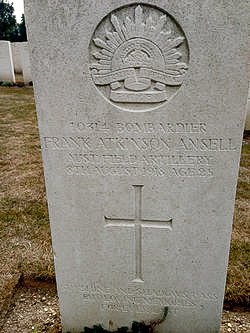
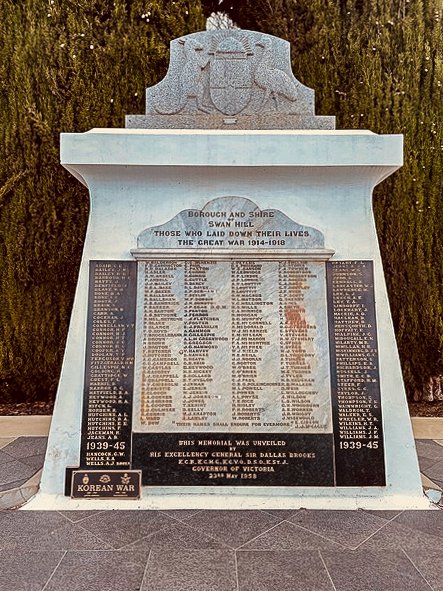
# 138 Corporal Charles Richard ANSELL
# 10314 Bombardier Frank ANSELL
Links to Official Records
The Fromelles Association would love to hear from you

Contacts
(Contact: carla@fromelles.info or geoffrey@fromelles.info).
(Contact: army.uwc@defence.gov.au or phone 1800 019 090).
Donations
If you are able, please contribute to the upkeep of this resource.
(Contact: bill@fromelles.info ).
